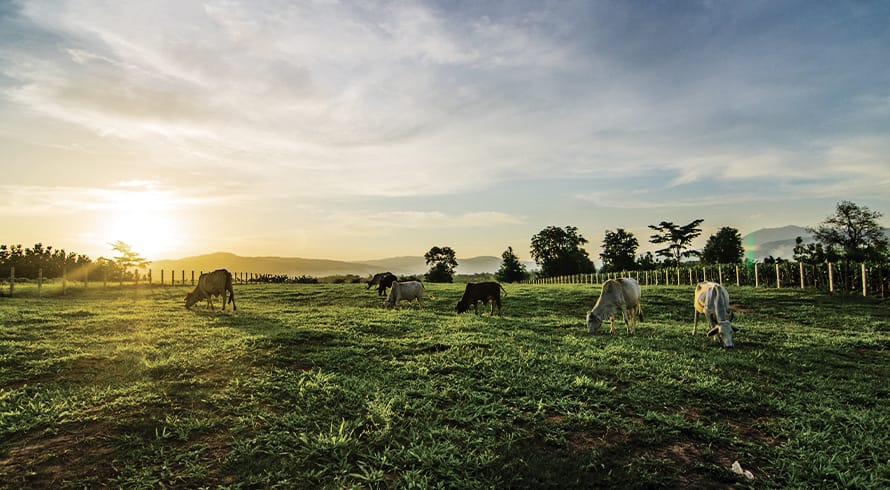Impact of the Climate Change Act on the Agriculture Sector
At a glance
- More than six years after it was first released for public comment, the Climate Change Act 22 of 2024 (Act) was signed into law by President Ramaphosa on 23 July 2024, although it is yet to come into operation.
- The Act provides for various regulatory mechanisms by which South Africa will seek to achieve its nationally determined contribution commitments under the Paris Agreement, including sectoral emission targets (SETs).
- The purpose of the SETs is to ensure that the country's climate change response is enacted at sectoral level "to steer sectors to make transformative changes for achieving long-term climate action".
The purpose of the Act is to enable the development of an effective climate change response and a long-term, just transition to a low-carbon and climate resilient economy and society for South Africa in the context of sustainable development.
The Act provides for various regulatory mechanisms by which South Africa will seek to achieve the commitments made in its Nationally Determined Contribution under the Paris Agreement, including sectoral emission targets (SETs). Greenhouse gas emission (GHG) reporting will also be regulated in terms of the Act, as opposed to the National Environmental Management: Air Quality Act 39 of 2004 under which the GHG Reporting Regulations were first published in 2017.
The purpose of the SETs is to ensure that the country’s climate change response is enacted at sectoral level “to steer sectors to make transformative changes for achieving long-term climate action”. In this regard, the Act requires inter alia that the Minister of Forestry, Fisheries and the Environment (Minister) must:
- within one year of the Act’s commencement, identify the GHG-emitting sectors and sub-sectors that are subject to SETs; and
- in consultation with the ministers responsible for each such sector and sub-sector, determine the prescribed framework and SETs for the sectors and sub-sectors.
Draft Sectoral Emission Targets Report
Pre-empting the process to some extent, the Minister published the draft Sectoral Emission Targets Report (Report) for public comment earlier this year in April when the Act was still in bill form and awaiting presidential assent.
As contemplated in the Act, the Report identifies sectors and responsible government departments that will be subject to SETs, including the agriculture sector. The Department of Agriculture, Rural Development Land Reform will be responsible for achieving the prescribed sector-specific SETs through the development and implementation of policies and measures (PAMs).
With the agriculture sector representing 11% of South Africa’s total gross emissions for 2022, stemming from fuel consumption, soils, livestock and land disturbances, it has been allocated a proposed cumulative emission reduction target of 3,4 Mt CO2eq for the period from 2025 to 2030, which is to be achieved through mechanisms provided for in sectoral PAMs. However, according to the Report, apart from the Post-2015 National Energy Efficiency Strategy, there are no PAMs that contain specific targets or mechanisms to drive the sector’s low carbon transition. As such, existing PAMs will have to be updated and streamlined to “prioritise feasible mitigation options that [do] not threaten food security”, which PAMs include, amongst others, the Conservation of Agriculture Resources Act 43 of 1983, the Draft Conservation Agriculture Policy, the Draft Climate Smart Agriculture Strategic Framework and the Policy on Agriculture in Sustainable Development.
Upon publication of the Report, the agriculture industry highlighted some key queries that need to be addressed in the development of the appropriate PAMs, including whether the emission reduction target is to be achieved through the adoption of new technologies and whether it accounts for (or even discourages) new market entrants. Questions have also been raised on the inability to control indirect emissions across the agriculture value chain, especially in respect of transportation of goods and the energy purchased from Eskom that has been generated by coal-fired power stations.
South Africa is, however, not alone in this venture and will likely draw on international best practices in developing appropriate PAMs. The Boston Consulting Group recently reported on interesting developments in this space, including the imposition of emissions tax on livestock and methane repressing feed additives and vaccines. As it stands, the South African agriculture sector is exempt from the provisions of the Carbon Tax Act 15 of 2019.
A lot of questions remain to be answered in terms of how the SETs are to be achieved. However, it is at this infancy stage that sector players can and should contribute most to shaping the PAMs, which will ultimately seek to ensure the sustainability of several interconnected industries in the long term.
However, with the Act not operative yet, it is unclear at what stage implementation will gain real momentum.
The information and material published on this website is provided for general purposes only and does not constitute legal advice. We make every effort to ensure that the content is updated regularly and to offer the most current and accurate information. Please consult one of our lawyers on any specific legal problem or matter. We accept no responsibility for any loss or damage, whether direct or consequential, which may arise from reliance on the information contained in these pages. Please refer to our full terms and conditions. Copyright © 2025 Cliffe Dekker Hofmeyr. All rights reserved. For permission to reproduce an article or publication, please contact us cliffedekkerhofmeyr@cdhlegal.com.
Subscribe
We support our clients’ strategic and operational needs by offering innovative, integrated and high quality thought leadership. To stay up to date on the latest legal developments that may potentially impact your business, subscribe to our alerts, seminar and webinar invitations.
Subscribe




